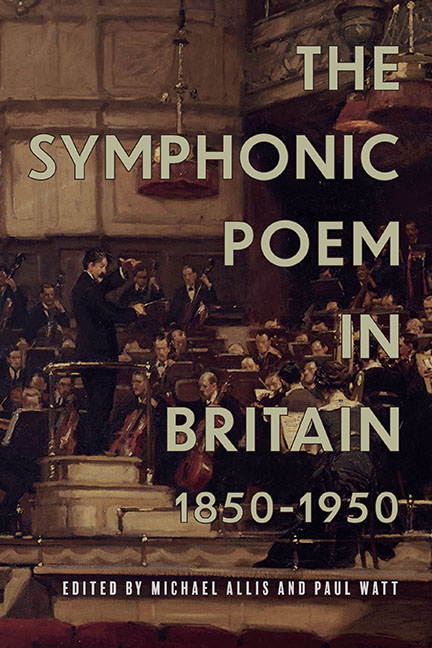9 - John Ireland’s Mai-Dun: Composite Influences
Published online by Cambridge University Press: 23 October 2020
Summary
IN a short, perceptive synopsis of British music in 1921 the composer Arthur Bliss ascribed different qualities to his contemporaries. John Ireland was designated as ‘the rugged’, and Eugene Goossens ‘the exquisite’. Bliss went on to assign single-word descriptors to other English composers: Arnold Bax was ‘romantic’, Lord Berners a ‘satirist’ and Gustav Holst ‘mystic’. All of these names contributed to the British symphonic poem repertory. Bax, Goossens and Ireland – close friends – shared a fascination for pagan historic landscapes, and this is reflected in their programmatic orchestral music. Although for Bax the prevailing mood was the twilight Celtic world, whilst Ireland was drawn to ancient Britain and Goossens to Greece, their interests overlapped, with both Ireland and Bax producing musical works on the subject of Pan the goat-god in the same year (1913): the former's orchestral prelude The Forgotten Rite and the latter's ‘freely worked symphony’ Spring Fire. The year 1921 was important for all of these composers, giving Bliss scope for thought in his assessment; Ireland's symphonic poem Mai-Dun and Bax's Tintagel (a work with a similar aesthetic, though reflective of an Arthurian rather than a Britanno-Roman site) were premièred, and Goossens's tiny orchestral scherzo Tam O’Shanter was heard at the BBC Promenade Concerts.
Other writers on Ireland's music have recognised its ruggedness, while perhaps classifying it slightly differently: ‘strongly made’, ‘robust’, ‘sturdy’, ‘craggy’, ‘stony’, ‘jagged’ and ‘tough’. Geoffrey Bush considered the composer's oeuvre to show ‘strength of purpose’; Herbert Lambert also saw this trait in the personality of the composer, with his ‘grim & rocklike exterior’. Assuming that Bliss meant some sort of amalgam of all these terms, with the emphasis perhaps on ‘sturdy’, then the opening of Mai-Dun, shown in Example 9.1, seems to exemplify his summary classification. It is marked Allegro energico, with a driving deciso and heavily accented staccato motif, oscillating around five notes. The tessitura of this motif, low in the violins in unison with violas, and in octaves with cellos and bassoons, adds to the ‘rugged’ nature of the opening music, as do the precise, weighted downbow indications. In addition, the rhythmic emphasis on the dotted crotchet in bar 1 creates a heavy effect, accentuated further by the ponderous underpinning by timpani and double basses.
- Type
- Chapter
- Information
- The Symphonic Poem in Britain, 1850–1950 , pp. 278 - 304Publisher: Boydell & BrewerPrint publication year: 2020



